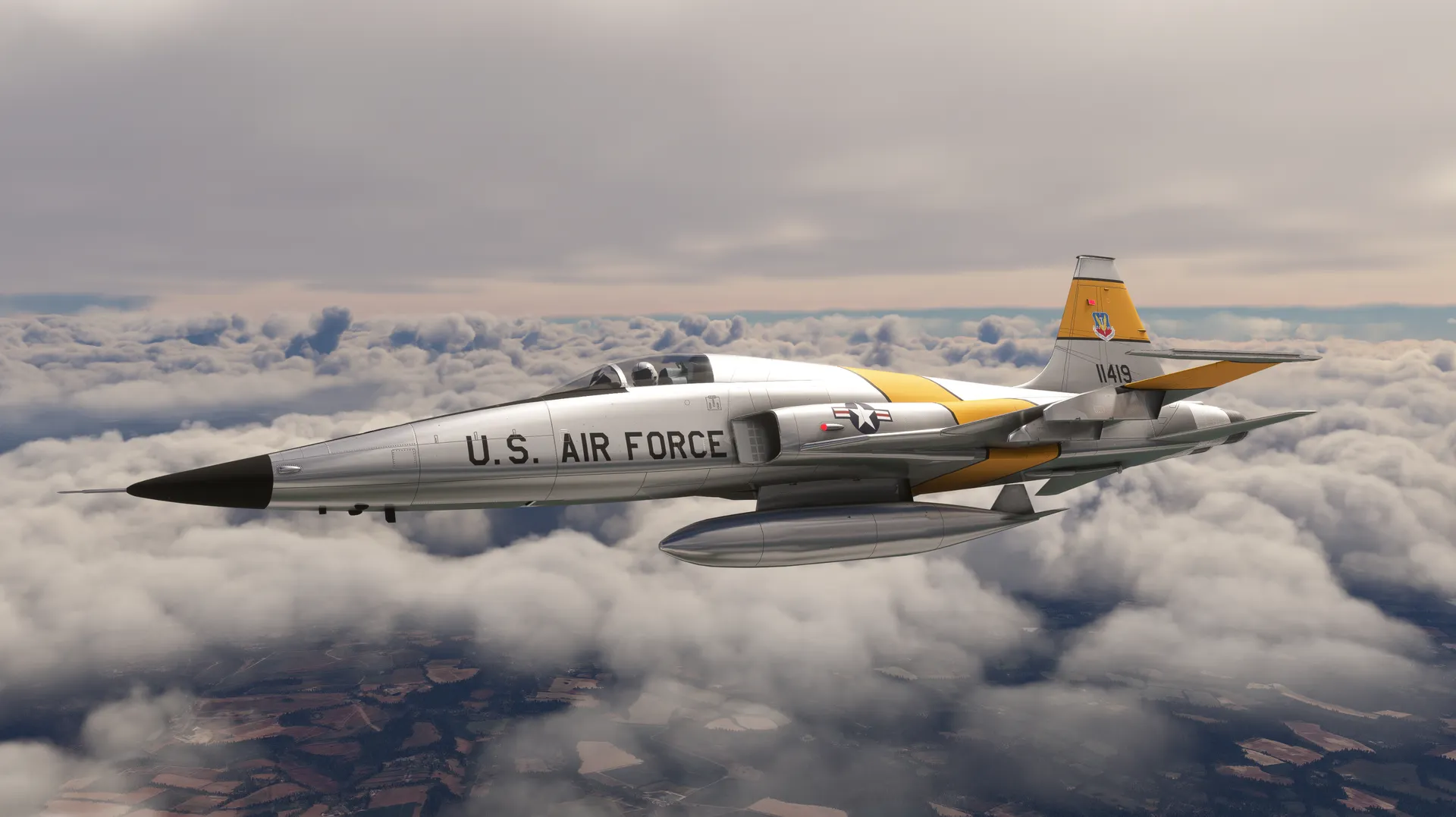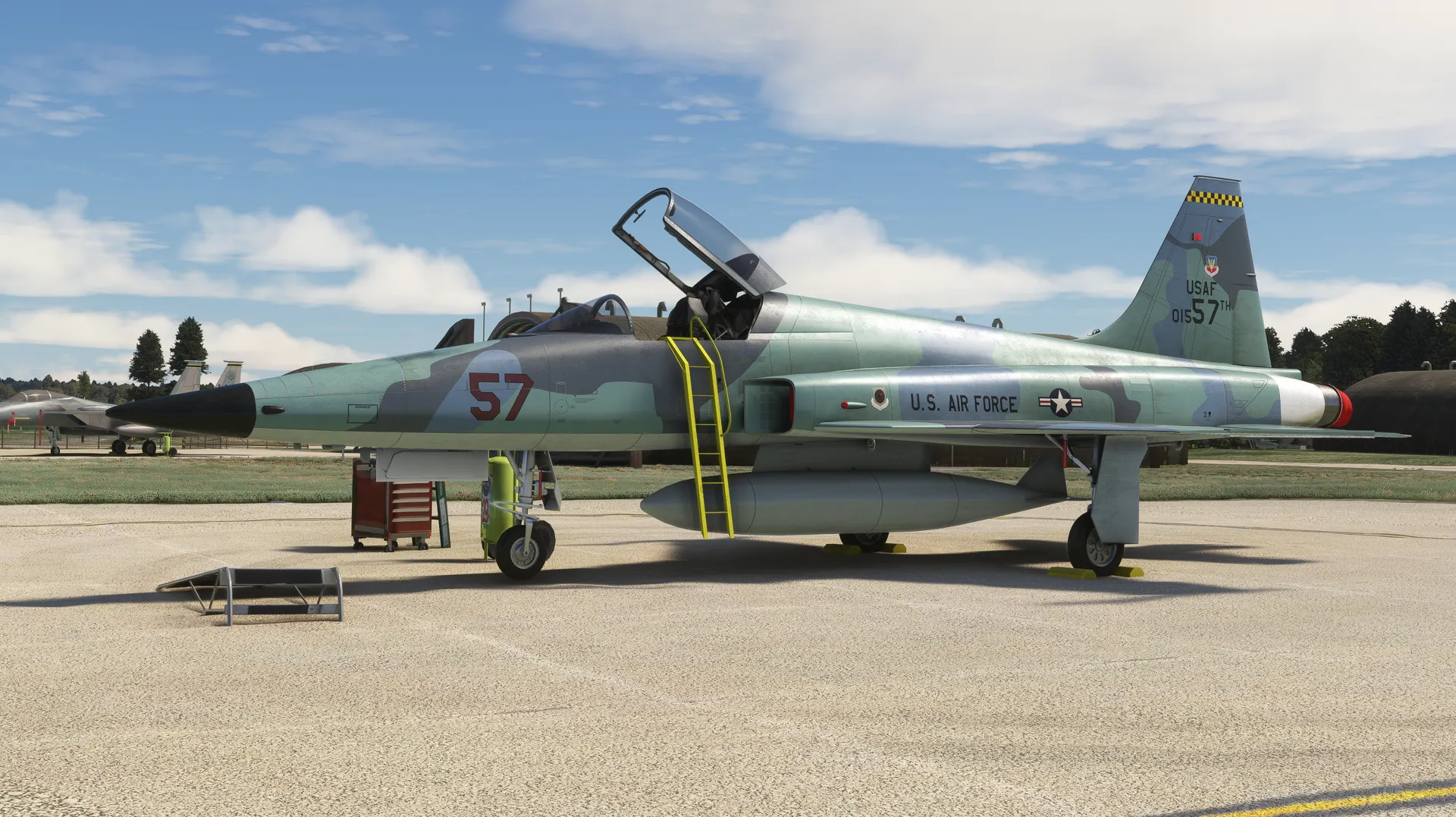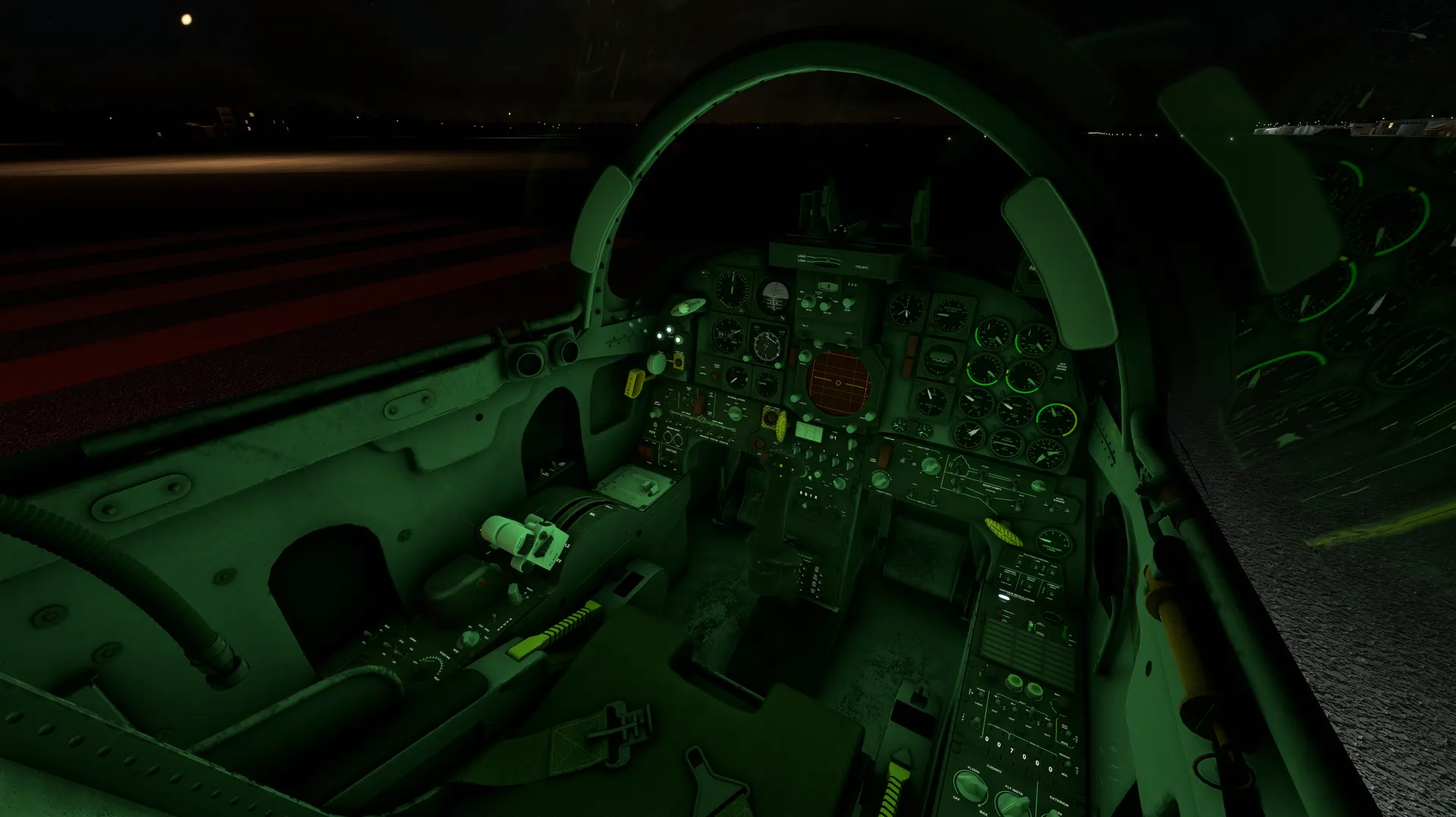- USD 23.99
- -20%
- USD 23.99
- USD 18.99
- Sale Ends: January 7 2026 6:00 PM +00:00
- View more offers at FS Addon Compare
- Added: March 21, 2024
- Updated: May 8, 2025
SC Designs are proud to bring the legendary F-5E Tiger II to Microsoft Flight Simulator.
Fully native MSFS aircraft
All models have been coded with Microsoft Flight Simulator native 'Model Behaviors' animations and built to MSFS operational specifications to prevent issues with future simulator upgrades. All custom cockpit instruments and screens are coded in HTML for native, high-performance display in MSFS The Tigers make use of the new simulator's features such as effects and sounds, fully reflective glass, native aerodynamic sound structures, the new 'Modern' aerodynamics system with the ability to provoke 'departure spins', and customised visibility controls for wheel chocks, covers. All F-5E-relevant animations, including extendable oleo gear leg for take-off MSFS SDK-compliant use of decals and materials for fine detail inside and out
Full custom sound set
Cockpit
High Fidelity virtual cockpit featuring accurately modelled ejector seat, controls and detailed texturing All analogue instruments constructed in 3D with smooth animations Reflective rear-view mirrors Scratched canopy' glass effects, reflective glass, icing and rain effects Crew figures in the virtual cockpit are coded to disappear when you occupy their seats Fully customisable crew helmet, name, flight suit patches and even faces
Aircraft systems
3D modelled dials, ADI, 'whiskey' compass and other high-detail instruments designed to emulate the appearance of the real aircraft Display screens with visual layouts based on the real aircraft's systems (within the confines of MSFS' current capability) Custom-coded, user-controlled ordnance via the simulator Payload Manager, allowing for live mounting of weapons on hardpoints with active weight increase Functional multiplayer-compatible radar
Paint schemes
Austria Bahrain Chile Plain grey FAB Iran "MiG-28" RMAF ROCAF ROKAF RSAF RVNAF Swiss USAF Aggressor USN Aggressor USAF Silver DC Designs Fighter Weapons School
A Paint Kit is also provided.



